
1. How and Why: Correct Arm Rotation Key to Golf Swing
The golf swing is all about rotation. While some players try to make the swing a side-to-side action, it is actually best to move the club by rotating while your center of gravity stays mostly in place. By rotating properly in the swing, you will be able to accelerate the club quickly during the downswing while staying on plane successfully. A great rotational swing isn't easy to create – it takes many years of practice to refine your swing to a point of great consistency – but the end result of the process is the ability to hit quality shots time after time. It would be an exaggeration to say that rotation is the 'secret' to golf, but it certainly is one of the most important elements of playing well.

2. Don’t Get “Stuck” on the Downswing – Golf Tip
The downswing portion of your golf swing takes so little time that it is essentially impossible to make any conscious changes to your swing at that point. Once you make the move to start down toward the ball, there isn’t much left that you can do to affect the outcome of the shot. In order to hit a good shot, you need to have done all the right things leading up to that point – and then swing through the ball, trusting your mechanics to do the job. From the top of the backswing down to impact only takes a fraction of a second, but there is a lot going on in that time.
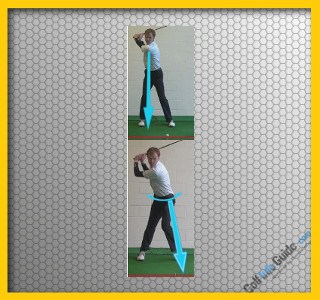
3. Muscle-Bound Golfers: Swing Involves More Than Just Arms, Golf Tip
When searching for more power in their golf swing, golfers will try just about anything. They will spend hundreds of dollars purchasing new equipment, they will buy instructional books and take lessons, and they will even take tips from random other golfers at the range. When it comes to adding distance, it seems that there is no limit to where a golfer will go with the hope of tacking a few extra yards onto the end of their shots.
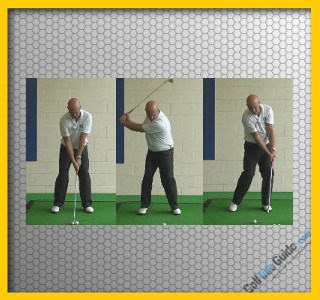
4. What Is A Compact Golf Swing?
As a golfer who is trying to improve, it can be hard to know where to go with your game. Should you try to get in better shape to add more distance to your shots? Should you leave your swing alone and just focus on improving your short game? Maybe you need new clubs to get the most out of your ability? While fitness, short game, and equipment can all play a role in improving your performance, there is one way you can change your game that should have an immediate impact on your consistency – making your swing more compact.

5. What Makes the Golf Ball Curve?
If you are a golfer, you already know one thing to be true – the golf ball never flies straight. Okay, so 'never' might be a bit of an exaggeration, but that is pretty much the case. You should never plan on hitting a straight shot from any kind of significant distance, because it just isn't going to happen. Sure, you might be able to get the ball to hold a straight flight pattern for 20 or 30 yards, but getting much beyond that means the ball is going to turn right or left at least slightly. Golf really is a game of curves, so you need to embrace that fact and learn how to use the curve to benefit you rather than hurt you.
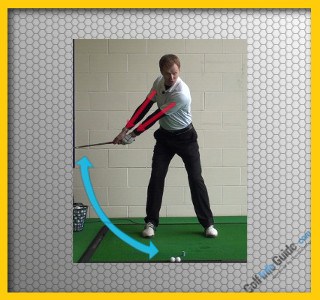
6. Taller Golfers: Use Height to Create Powerful Arc, Golf Tip
Height has another advantage: It engenders a wider swing arc, which translates to greater power with less effort. Being tall, though, doesn’t automatically give you a wide arc. Certain methods must be used to put the clubhead on the proper path. Naturally, it starts at setup. The left arm (for a right-hander) and shaft should be unified in a straight line from shoulder to ball. It’s critical to maintain this line for the initial stages of the swing by performing a low and slow takeaway.
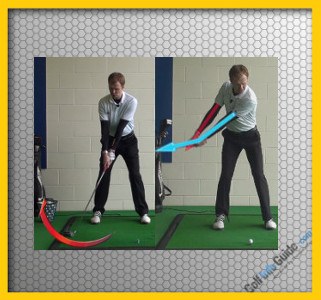
7. Swing The Handle Golf Swing Teaching, Golf Tip
Teaching professionals who advocate swinging the handle say players often fall into trouble when trying to control the club face with the hands. They say players would be better holding the club lightly and focusing on using the forearms to control the movement of the handle. An analogy often drawn is comparing the golf swing to a two armed tennis stroke in which the tennis player uses the forearms and shoulders to drive a stroke rather than manipulating the hands and racquet. Swing the handle practitioners say the only action the hands should have during the swing is the hinging and unhinging of the hands and wrists.
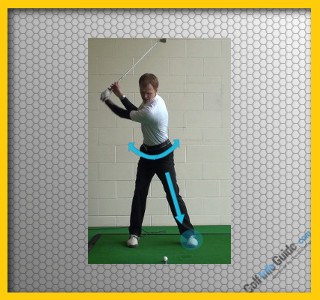
8. Correct Golf Swing Flaws by Using Big Muscles
Many golf swing faults are rooted in overuse of the arms and hands. Slices, hooks, fat shots, tops, shanks, lack of power – if you fail to involve the body's big muscles, you'll inevitably suffer from one if not all of these problems. By big muscles, we're referring primarily to the hips, shoulders and torso (aka the core). Most modern golf teachers consider these the engine of the swing, with the motion of the hands and arms coming in reaction to the work of the big muscles.

9. How To Be a Consistent Golf Ball Striker
Consistency is the name of the game in golf. If you are playing a full round you will have to navigate your way around 18 holes, many of them likely protected by water hazards, rough, trees, bunkers, and more. It doesn't do you much good to hit great shots on three or four of these holes if you make a complete mess out of the rest of the round. It is fun to come up with a spectacular shot on the course from time to time, but it is far more important to hit consistent shots from the first hole to the last.

10. Thumbs Up to Groove Powerful Late Release Tip
hether you call it the late release, delayed release, down-cock or lag, holding your wrist hinge from the top of the backswing well into the downswing is a key to hitting long drives. Unfortunately, plenty of amateur golfers drain this power source the instant they complete the backswing, casting the hands toward the ball and unhinging the wrists.





